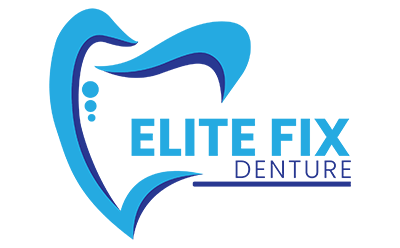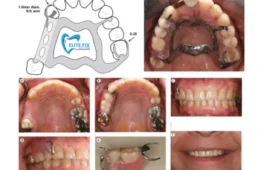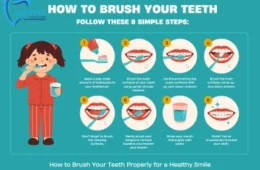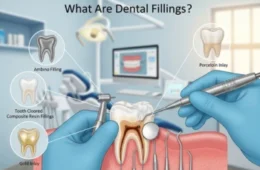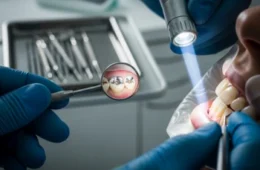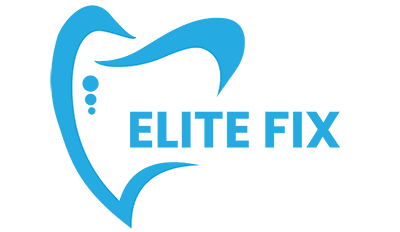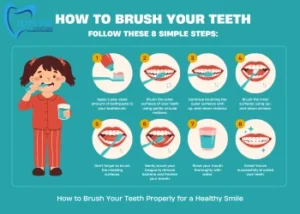
How to Brush Your Teeth
At EliteFixDenture.com, we believe a bright smile starts with simple daily habits. Brushing your teeth properly protects against cavities, gum disease, and enamel wear. Follow these evidence-based tips to keep your smile shining year-round.
Why Proper Brushing Matters
You invest time in your health every day—brushing your teeth ranks high on that list. Effective brushing removes plaque, the sticky film that leads to decay and inflammation. In bustling Chicago neighborhoods like Lincoln Park and Lakeview, where coffee runs and winter winds dry out your mouth, consistent care keeps issues at bay.
Poor technique leaves harmful bacteria behind, raising risks for costly fixes. As Dr. Maya Lin, our Cosmetic Dentistry specialist focused on smile design, notes, “Mastering brushing now enhances your natural beauty and prevents future concerns like staining or sensitivity.”
Choosing the Right Tools for Brushing
Select tools that work with your mouth, not against it. Start with a soft-bristled toothbrush to gently clean without abrading gums. Pair it with fluoride toothpaste for proven cavity protection.
Toothbrush Options: Manual vs. Electric
Both types remove plaque effectively when used right. Electric brushes suit those with limited dexterity or braces. Here’s a quick comparison:
| Feature | Manual Toothbrush | Electric Toothbrush |
| Ease of Use | Requires good technique for full coverage | Built-in timer and oscillation aid consistency |
| Plaque Removal | Effective with short strokes | Removes up to 21% more plaque |
| Best For | Everyday users on a budget | Arthritis sufferers or kids learning habits |
| Replacement | Every 3-4 months | Heads every 3 months; base lasts years |
Replace your brush every three months or when bristles fray—worn ones miss spots.
Toothpaste Essentials
Opt for ADA-approved fluoride toothpaste. It strengthens enamel and fights bacteria. Use a pea-sized amount for adults; kids under 3 need just a rice-grain smear.
Step-by-Step Guide: How to Brush Your Teeth Properly
Brush twice daily for two full minutes—once in the morning and before bed. Angle your brush at 45 degrees to the gumline for best results.
- Wet your brush and add toothpaste.
- Start at the outer surfaces: Use short, gentle back-and-forth strokes, covering all teeth from back molars forward.
- Hit the inner surfaces: Angle for cheeks and tongue sides, tilting vertically for front teeth with up-and-down motions.
- Scrub chewing surfaces: Sweep side-to-side to clear food bits.
- Brush your tongue: Gently remove bacteria for fresher breath.
- Spit, don’t rinse aggressively—let fluoride linger.
Time yourself with a song or app to hit that two-minute mark.
Common Brushing Mistakes to Avoid
Many rush through brushing, missing key protections. Spot these pitfalls and adjust.
- Brushing too hard: Harsh scrubbing erodes enamel and irritates gums—keep pressure light.
- Skipping the timer: Under two minutes leaves plaque behind; set a reminder.
- Forgetting the tongue: Bacteria thrive there, causing bad breath.
- Rinsing right after acidic eats: Wait 30-60 minutes post-citrus or soda to safeguard softened enamel.
- Ignoring between-teeth care: Brush pairs with daily flossing for full plaque removal.
Myths About Brushing Teeth (Engaging & Shareable)
Myth 1: Brushing harder cleans better
Truth: Brushing aggressively can actually wear down enamel and irritate gums. The ADA recommends using a soft-bristled toothbrush with gentle, circular motions — technique matters more than pressure.
Myth 2: Whitening toothpaste can replace professional cleaning
Truth: Whitening toothpaste only removes surface stains; it doesn’t clean below the gumline or remove tartar. You still need routine dentist visits for deep cleaning.
Myth 3: You only need to brush once a day
Truth: Plaque begins forming just hours after brushing. Skipping brushing — especially at night — increases the risk of cavities and bad breath.
Myth 4: Brushing right after eating is the best time
Truth: If you’ve eaten acidic foods (like oranges, soda, vinegar), brushing immediately can damage softened enamel. Wait 30–60 minutes before brushing.
Myth 5: Electric toothbrushes are always better
Truth: Both manual and electric brushes work well when used correctly. Electric brushes are just more helpful for people with braces, arthritis, or poor brushing technique.
Morning vs. Night Brushing – Which Is More Important?
Both are equally important, but here’s how they affect oral health differently:
| Time | Why It Matters |
| Morning Brushing | Removes plaque, morning breath, and bacteria that build up overnight. If you drink coffee or eat breakfast, brushing helps protect your teeth from acids and sugars. |
| Night Brushing | Even more important than morning. When you sleep, saliva production slows down, giving bacteria a better chance to multiply. Brushing before bed removes food particles and protects teeth overnight. |
| Best Practice | Brush twice daily – once in the morning, once before bed. If you consume acidic foods in the morning, wait 30 minutes before brushing. |
🔹 If you must choose just one, brushing at night does more to prevent cavities, gum disease, and bad breath.
Brushing Tips for Chicago Winters
Chicago’s harsh winters bring dry air and indoor heating, which can parch your mouth and boost cavity risks. Hydrate often with fluoridated water to rinse sugars away. In Lincoln Park or Lakeview, bundle up but don’t forget a humidifier at home—it keeps saliva flowing for natural protection.
Layer on lip balm with SPF during sunny-but-chilly days, and chew sugar-free gum post-meals to stimulate cleansing saliva.
For more on brushing basics, check the American Dental Association’s guide.
FAQs: Your Brushing Questions Answered
Q: What is the correct way to brush your teeth?
A: Brush twice daily for 2 minutes with a soft brush and fluoride toothpaste. Angle at 45° to gums; use short, gentle strokes on outer, inner, and chewing surfaces; brush tongue; spit without rinsing fully.
Q: Can I brush right after breakfast?
A: If your meal includes acids, wait 30-60 minutes to protect enamel.
Q: What’s better, manual or electric brushes?
A: Both work well; electrics edge out for thoroughness if you struggle with technique.
Q: How much toothpaste do kids need?
A: A rice-grain smear for under 3s; pea-sized for ages 3-6, with supervision.
Q: Does brushing alone prevent cavities?
A: No—pair it with flossing and dentist visits for complete care.
Q: When should I replace my toothbrush?
A: Every 3-4 months, or sooner if bristles splay.
Q: Is fluoride toothpaste safe?
A: Yes, in recommended amounts—it strengthens teeth without harm.
Q: How does dry winter air affect brushing?
A: It reduces saliva; drink water and use a humidifier to stay protected.
Q: How long should I brush each time?
A: Aim for two minutes twice daily to thoroughly remove plaque.
Q: What is the 3-3-3 rule for brushing teeth?
A: Brush 3 times daily, for 3 minutes each, and replace toothbrush every 3 months for thorough plaque removal.
Q: Why do I struggle brushing my teeth?
A: Common causes: sensory issues (e.g., texture sensitivity), mental health (anxiety/depression), or habits like perfectionism. Try softer tools, timers, or professional advice.
Q: What are the 10 steps to brushing your teeth?
A: 1. Wet brush. 2. Add pea-sized toothpaste. 3. Angle 45° to gums. 4. Brush upper outer surfaces. 5. Brush lower outer surfaces. 6. Upper inner surfaces. 7. Lower inner surfaces (vertical for fronts). 8. Chewing surfaces side-to-side. 9. Brush tongue. 10. Spit and air-dry brush. Total: 2 minutes.
Q: How to brush teeth for kids step by step?
A: 1. Use child-sized soft brush, rice-grain toothpaste (under 3) or pea-sized (3+). 2. Angle 45° to gums. 3. Gentle circles/strokes on outer surfaces. 4. Inner and chewing surfaces. 5. Light tongue brush. Supervise to age 7; time with a song for 2 minutes twice daily.
Q: How to get your 7 year old to brush their teeth?
A: Make it fun: Choose character brushes/toothpastes, brush together with a 2-minute song/timer, reward with stickers, mirror games, and praise. Supervise technique consistently.
Q: Is it okay to brush teeth three times daily?
A: Yes, if gentle—reduces plaque without enamel wear. ADA says twice minimum, but three is fine post-meals.
Q: What is the 2 2 2 rule for brushing teeth?
A: Brush 2 times daily, for 2 minutes each, with 2 key tools: soft brush and fluoride toothpaste. Divide time across mouth quadrants.
This article provides general informational guidance only and does not replace professional dental advice. Consult your dentist for personalized recommendations.
For expert dental care in Chicago, visit EliteFixDenture.com. Schedule your checkup today and keep that smile elite!
